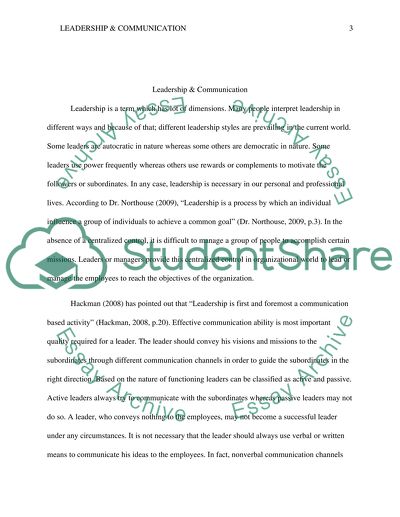Cite this document
(“Leadership & Communication Research Paper Example | Topics and Well Written Essays - 2000 words”, n.d.)
Retrieved from https://studentshare.org/health-sciences-medicine/1428766-leadership-and-communication
Retrieved from https://studentshare.org/health-sciences-medicine/1428766-leadership-and-communication
(Leadership & Communication Research Paper Example | Topics and Well Written Essays - 2000 Words)
https://studentshare.org/health-sciences-medicine/1428766-leadership-and-communication.
https://studentshare.org/health-sciences-medicine/1428766-leadership-and-communication.
“Leadership & Communication Research Paper Example | Topics and Well Written Essays - 2000 Words”, n.d. https://studentshare.org/health-sciences-medicine/1428766-leadership-and-communication.


